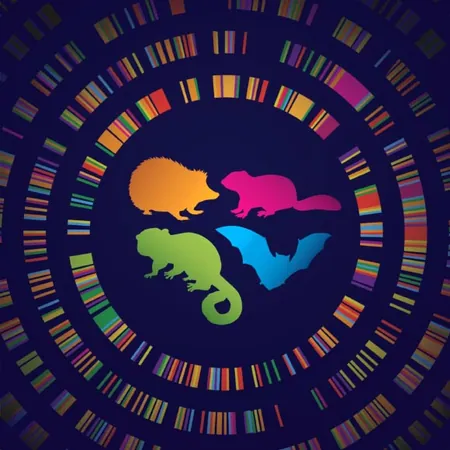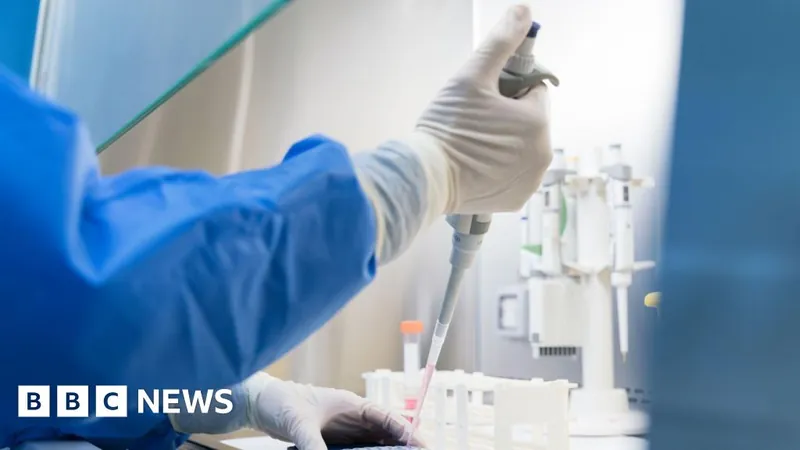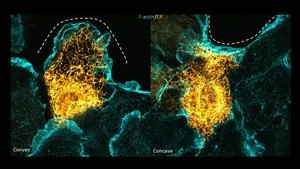
Unlocking Hibernation: How Animal Superpowers Could Revolutionize Human Health
2025-08-04
Author: Amelia
Could Humanity Harness the Secrets of Hibernation?
Recent research from the University of Utah has unveiled groundbreaking insights into the extraordinary abilities of hibernating animals, offering the tantalizing possibility of developing new treatments for neurodegenerative diseases and diabetes. Two pivotal studies have laid the groundwork for understanding how the genetic traits that enable hibernation might also be dormant within our very own DNA.
FTO Genes: The Key to Hibernation?
At the heart of this research is a gene cluster known as the fat mass and obesity (FTO) locus, which plays a significant role in the metabolic adaptations of hibernating species. Notably, humans share these genes, which Professor Chris Gregg, a senior author of both studies, describes as the "strongest genetic risk factor for human obesity." Yet, hibernators have an uncanny ability to utilize these genes in unique and beneficial ways.
The Science Behind the Superpowers
Gregg and his research team discovered unique DNA regions related to the FTO locus that fine-tune the activity of neighboring genes, enabling hibernators to gain weight before winter and efficiently use their fat reserves during hibernation. Remarkably, mutations in these specialized regions within mice led to observable changes in weight gain and metabolism, suggesting a deeper connection between these genomes and metabolic flexibility.
The Maestro of Metabolism: Hibernator-Specific DNA
Instead of being traditional genes, the researchers found that these hibernator-specific regions are like conductors guiding the expression of nearby genes. Dr. Susan Steinwand, first author on the study, revealed, "A single mutation in these tiny DNA regions can alter the activity of hundreds of genes, showcasing an incredible range of impact." This discovery opens avenues for potentially regulating human genes to mimic the metabolic finesse seen in hibernators.
The Quest for Hibernation Genes
Identifying the genetic sequences tied to hibernation is akin to finding needles in a DNA haystack. The research team employed various whole-genome technologies, pinpointing sequences that have evolved in hibernators but remained unchanged in other mammals for over 100 million years. Dr. Elliott Ferris highlighted their findings, stating that rapid changes in these sequences point to crucial elements for hibernation.
A New Blueprint for Human Health?
These findings hint at the remarkable potential for humans to tap into our latent genetic capabilities. If we could regulate our metabolic processes like hibernators, it might be possible to combat conditions such as type 2 diabetes by enhancing our ability to endure extended periods of energy scarcity. The researchers believe their breakthrough could change how we approach age-related diseases, paving the way for strategies that help humans achieve resilience similar to that of hibernators.
A Glimpse into the Future of Medicine
The studies emphasize that humans already possess the genetic foundation for these hibernatory advantages. Understanding the specific control switches governing these traits could revolutionize how we manage metabolic health and age-related conditions. Professor Gregg remains hopeful: "By unveiling the mechanisms behind hibernation, we may uncover invaluable strategies for improving human health. The secrets of hibernators may hold the key to a healthier future for us all."









 Brasil (PT)
Brasil (PT)
 Canada (EN)
Canada (EN)
 Chile (ES)
Chile (ES)
 Česko (CS)
Česko (CS)
 대한민국 (KO)
대한민국 (KO)
 España (ES)
España (ES)
 France (FR)
France (FR)
 Hong Kong (EN)
Hong Kong (EN)
 Italia (IT)
Italia (IT)
 日本 (JA)
日本 (JA)
 Magyarország (HU)
Magyarország (HU)
 Norge (NO)
Norge (NO)
 Polska (PL)
Polska (PL)
 Schweiz (DE)
Schweiz (DE)
 Singapore (EN)
Singapore (EN)
 Sverige (SV)
Sverige (SV)
 Suomi (FI)
Suomi (FI)
 Türkiye (TR)
Türkiye (TR)
 الإمارات العربية المتحدة (AR)
الإمارات العربية المتحدة (AR)